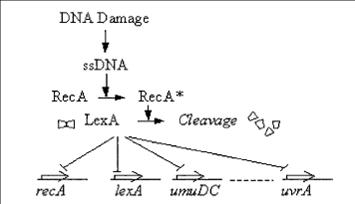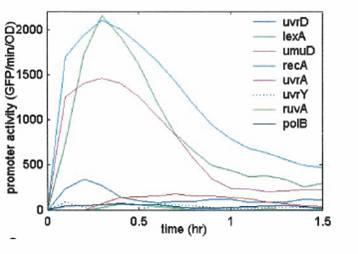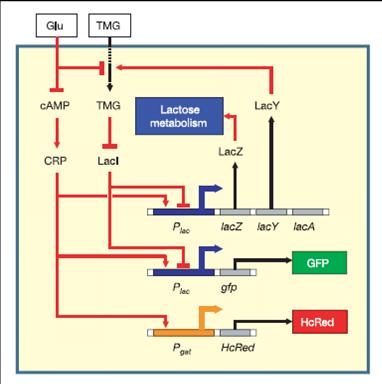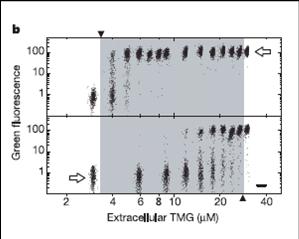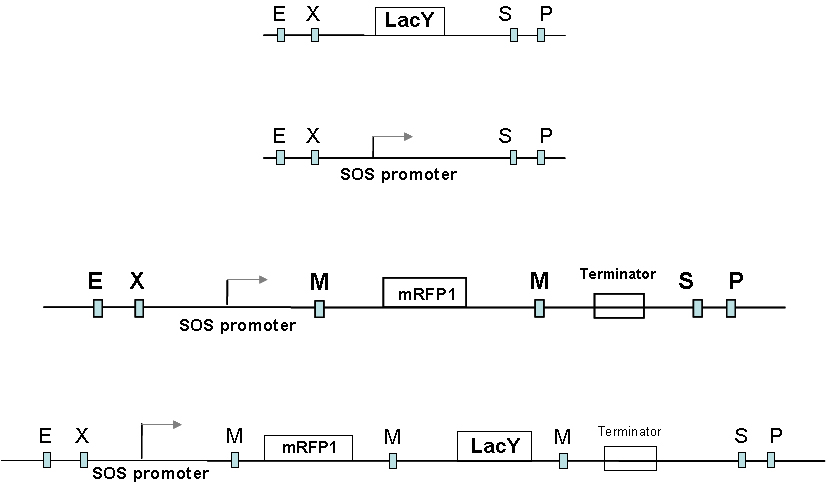Memory effects of UV exposure
From 2006.igem.org
| Line 3: | Line 3: | ||
| - | + | ==Group III== | |
===Aim=== | ===Aim=== | ||
| + | |||
We are interested in understanding the long term effects of DNA damage in bacterial cells more pertinently | We are interested in understanding the long term effects of DNA damage in bacterial cells more pertinently | ||
Revision as of 04:16, 31 October 2006
Group III
Aim
We are interested in understanding the long term effects of DNA damage in bacterial cells more pertinently
1) Is there an early warning system in bacteria to DNA (UV) Damage?
2) If so, do bacteria remember and communicate the damage?
Approach
So what is this UV damage response and why long term monitoring?
The SOS response
The SOS genetic network consists of various genes that perform diverse functions in response to DNA Damage NER (Nucleotide Excision Repair) Translesion DNA replication Homologous recombination Cell division arrest
RecA acts as a sensor of DNA Damage RecA gets activated and mediates LexA auto-cleavage
Transient response induced in response to DNA damage. The promoter activity increases rapidly in the first few minutes and decrease within an hour.
Thus, long time monitoring of DNA Damage induced by UV Irradiation requires that this transient signal generated is stabilized.
So, we tried to couple this transient signal to a bi-stable network to enable long time monitoring of DNA Damage.
Bistability in the Lac operon in Muk 21
Ozbudak EM et. al., 2004
Here comes the exciting stuff, the synthetic biology part! We have made the following parts
Now moving onto the actual experiments and the results!!!
